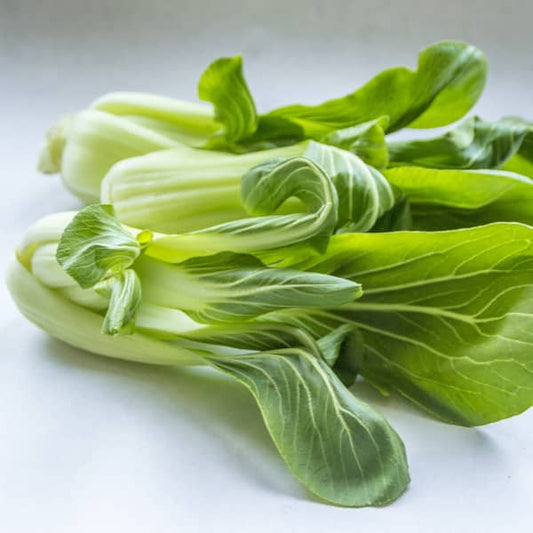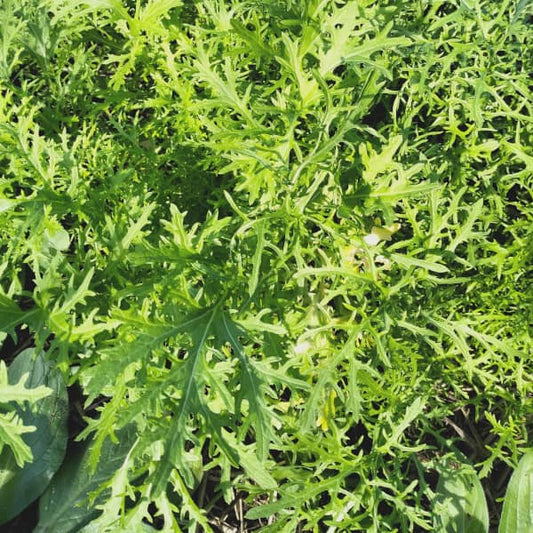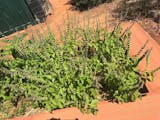'Banana Legs' Bottle Tomato – bush tomato, perfect for pots with a mild, fruity aroma.
This variety is a sun-yellow paste tomato with an exceptional, mild-fruity flavor and an almost acid-free aroma. It ripens mid-early and is ideally suited for cultivation in greenhouses, protected outdoor beds, and large containers. Compact-growing, high-yielding, and perfect for self-sufficiency as well as organic growing.
 Origin & History
Origin & History
'Banana Legs' is an open-pollinated paste tomato, selected in 1984 in the USA by John Swenson from breeding lines of the well-known tomato breeder Tom Wagner (creator of the variety Green Zebra). It originally arose from a mixture called Mixed Long Toms, which Wagner distributed through his company 'Tater Mater'. Swenson isolated the yellow form and gave it the name 'Banana Legs'.
Since 1988, the variety has been spread through seed preservation initiatives and from there found its way into numerous seed catalogs. It is one of the few yellow paste tomatoes and is considered one of the first modern, open-pollinated cultivars with striking color and compact growth – making it attractive for hobby gardeners and self-sufficient growers.
Today it is maintained and passed on by seed preservation initiatives and enthusiasts of open-pollinated varieties. Its unique flavor profile with mild, fruity sweetness and an almost acid-free character makes it a true enrichment in any variety garden.
 Appearance & Characteristics
Appearance & Characteristics
The plant grows compactly and determinately as a bush tomato, reaching a height of about 80–120 cm. It develops abundant fruit clusters and bears vigorous, dark green foliage. No pruning or sucker removal is required.
Fruit details:
Size: Medium, approx. 70–90 g per fruit, approximately 8-10 cm long
Shape: Elongated, bottle-shaped
Color: Sun-yellow, evenly colored
Texture: High flesh content with relatively few seeds
Flavor: Mild, fruity-sweet and almost acid-free – refreshing and aromatic
 Usage & Cultivation Highlights
Usage & Cultivation Highlights
'Banana Legs' fruits are excellent as a fresh snack, for salads, and for processing into ketchup, sauces, and purées. With their sun-yellow color and high flesh content, they are a true eye-catcher on the plate and ideal for further processing. They are also very well suited for drying and preserving.
Thanks to their space-saving growth, the variety is perfect for small gardens, terraces, and balconies – excellent for cultivation in pots and also as a balcony tomato. In addition, it convinces with ease of care and reliable yields, with consistent fruit set throughout the season, as well as robustness against changing weather conditions. The variety offers a long harvest period without the need for pruning or sucker removal.
Compared to other paste tomatoes, 'Banana Legs' remains particularly compact and is especially well suited for container growing – an ideal choice for those who prefer robust, open-pollinated varieties and have limited space.


![American Mountain Mint [Pycnanthemum pilosum]](http://www.benjis.net/cdn/shop/files/AmerikanischeBergminze-Americanmint-Pycnanthemumpilosum-www.benjis.net.jpg?v=1704292329&width=533)
![Anise [Pimpinella anisum]](http://www.benjis.net/cdn/shop/files/Anise_-_Pimpinella_anisum_-_www.benjis.net.jpg?v=1738942704&width=533)
![Apple mint [Mentha rotundifolia]](http://www.benjis.net/cdn/shop/files/Apfelminze-Applemint-Hortelamaca-Mentharotundifolia-www.benjis.net.jpg?v=1763734068&width=533)
![Artischoke Imperial Star [Cynara cardunculus var. scolymus]](http://www.benjis.net/cdn/shop/files/ArtischockeImperialStar-Artichoke-Alcachofra-Cynaracardunculusvar.scolymus-www.benjis.net.jpg?v=1705194551&width=533)











